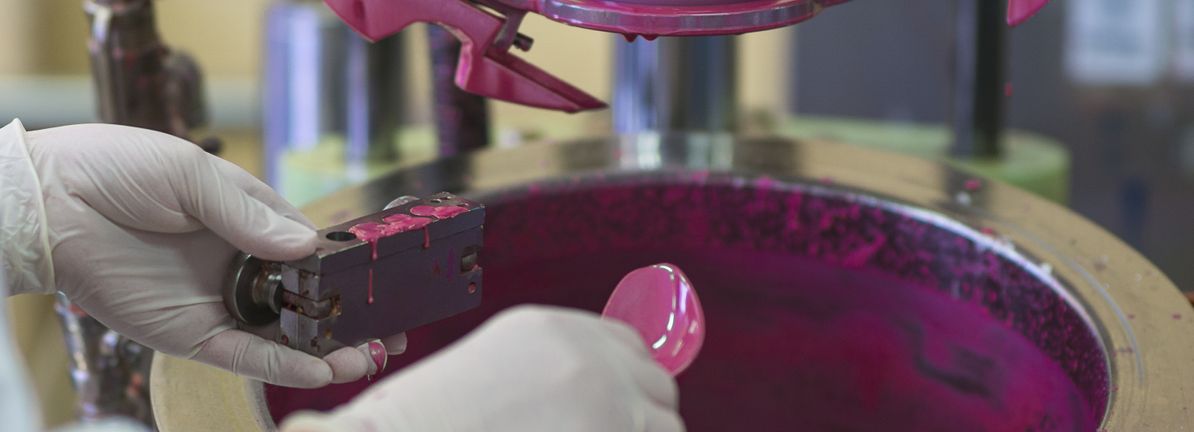Cholesterol is thought to affect adults traditionally. But lately, cholesterol issues are found in children, too. To learn more about this alarming trend, HT Lifestyle reached out to Dr Sajili Mehta, consultant pediatric endocrinologist at…
Author: admin
-

Ask Sam Mailbag: Bulls hot start, Coby's return, LaVine's comments about Chicago, and more – NBA
- Ask Sam Mailbag: Bulls hot start, Coby’s return, LaVine’s comments about Chicago, and more NBA
- We Are About to Find Out If the Chicago Bulls Really Are THIS Good … Bleacher Nation
- Chicago Bulls: Real Progress or Shooting Luck? On Tap Sports…
Continue Reading
-

Astronomers capture a spooky “cosmic bat” in deep space
Right in time for Halloween, astronomers have spotted what looks like a flying bat soaring above the European Southern Observatory’s (ESO’s) Paranal site in Chile. Using its wide field of view, the VLT Survey Telescope (VST) captured a vast cloud…
Continue Reading
-

China Made A ‘Mistake’ With Rare-earth Controls: Bessent To FT
China’s decision to impose export controls on rare earths was a “mistake” and drew attention to Beijing’s ability to use them as a coercive tool, US Treasury Secretary Scott Bessent said in an interview published Saturday.
The Barron’s news department was not involved in the creation of the content above. This article was produced by AFP. For more information go to AFP.com.
© Agence France-PresseContinue Reading
-

Westlake Chemical Partners (WLKP) Profit Margin Holds at 4.8%, Reinforcing Stable Yield Narrative
Westlake Chemical Partners (WLKP) reported a net profit margin of 4.8%, matching last year’s performance. Earnings have declined by 6.7% per year over the past five years and most recently slipped into negative growth. Revenue is forecast to grow at 7.7% per year, lagging behind the broader US market’s 10.3% pace. Shares currently trade at $18.86, notably below the fair value estimate of $49.88. While reported earnings are viewed as high quality, concerns about dividend sustainability, financial strength, and underwhelming growth expectations are shaping how investors interpret these results.
See our full analysis for Westlake Chemical Partners.
The next section puts these results in context by comparing the numbers against the widely followed narratives. This is where consensus may hold up, and where opinions might get tested.
Curious how numbers become stories that shape markets? Explore Community Narratives
NYSE:WLKP Earnings & Revenue History as at Nov 2025 -
Westlake Chemical Partners maintained a net profit margin of 4.8%, unchanged from last year, showing resilience despite challenging sector conditions.
-
Momentum comes from stable cash flows and secure distribution agreements, which attract investors looking for reliable income even as broader manufacturing and chemical demand fluctuates.
-
Consistent margins support the investment case for predictable distributions, supporting the view that the partnership’s structure shields it from some cyclical shocks.
-
Investors favor its reputation as a “safe haven” for yield within a volatile sector, prioritizing reliability over headline growth.
-
-
Earnings have declined by 6.7% per year over the last five years, with the most recent period seeing negative earnings growth, highlighting an area of continued weakness.
-
While long-term profit deterioration fuels caution, proponents point out that high-quality earnings and durable parent company relationships can mitigate downside risk.
-
The extended earnings slump is offset by above-average reliability in reported earnings quality, which bulls say is unusual during sector downturns.
-
Even in the face of falling earnings, guaranteed partnership income streams limit short-term cash flow shocks that typically worry income-seeking investors.
-
-
Shares at $18.86 remain well below the DCF fair value estimate of $49.88, and the price-to-earnings ratio is lower than both the chemicals industry average and peer group, underscoring a notable discount.
-
The considerable gap between price and fundamental value draws attention from investors searching for value, especially with sector volatility keeping more richly valued peers out of reach.
-
This valuation disconnect suggests a margin of safety for buyers, even as weaker financial positioning and tepid revenue forecasts discourage some.
-
A discounted multiple to both industry and peers strengthens the value thesis, provided income stability persists.
-
Continue Reading
-
-

Five-Year Losses and Slow 4% Revenue Growth Highlight Cautious Earnings Backdrop
Quaker Chemical (KWR) remains unprofitable, with losses having increased at a rate of 1.1% per year over the last five years. While revenue is forecast to grow at 4% annually, this pace trails the broader US market’s expected 10.3% growth. For investors, slow revenue forecasts and persistent losses keep attention on the gap between the current trading price of $138.89 and the estimated fair value of $255.48. Sentiment is likely to remain cautious until the path to profitability becomes more visible.
See our full analysis for Quaker Chemical.
Next, we will see how these headline figures stack up against the market’s prevailing narratives for Quaker Chemical, highlighting where the numbers reinforce sentiment and where they raise new questions.
See what the community is saying about Quaker Chemical
NYSE:KWR Earnings & Revenue History as at Nov 2025 -
Analysts see profit margins climbing from -0.4% now to a sizable 25.9% by 2028, a dramatic swing that is unusual for the sector and signals high earnings leverage if improvements materialize.
-
According to the analysts’ consensus view, much of this turnaround banks on major shifts in product mix and cost control:
-
They highlight that double-digit growth in advanced, sustainable chemistries, combined with bold cost-cutting aimed at $40 million in annualized savings, is projected to elevate recurring margins across fast-growing verticals like automation and energy storage.
-
Yet, the consensus narrative also notes ongoing exposure to margin pressure from cost inflation and end-market risk, which have led to goodwill impairments and regional profit volatility, especially outside Asia.
-
See why analysts think Quaker Chemical’s margin shift could upend expectations. Read the full Consensus Narrative. 📊 Read the full Quaker Chemical Consensus Narrative.
-
Quaker’s net leverage stands at 2.6x trailing EBITDA, reflecting the strain of recent acquisitions, interest expense, and direct restructuring charges on the company’s capital structure.
-
Analysts’ consensus view contends that elevated financial risk and restricted flexibility may curb strategic moves:
-
Significant new investments, such as plants in China and Thailand, could boost longer-term earnings but also limit room for buybacks, further acquisitions, or balance sheet repairs until profits recover.
-
Bears point to increased interest costs and restructuring outlays, warning these may hold back net income and free cash flow, especially if targeted cost savings do not materialize as planned.
-
Continue Reading
-
-

Akastor (OB:AKAST) Trades at 8.8x Sales Despite Ongoing Losses, Valuation Risks Grow
Akastor (OB:AKAST) remains in a loss-making position, with no signs of a positive net profit margin or quality earnings over recent periods. While the company has managed to reduce losses at a rate of 57.7% per year over the last five years, revenue is projected to decline by 1.9% annually for the next three years, and profit growth is not expected to accelerate beyond the wider Norwegian market. The combination of ongoing unprofitability, anticipated revenue contraction, and a price-to-sales ratio of 8.8x, which is much higher than the industry and peer averages, puts pressure on the valuation. The current share price of NOK 11.12 stands well above the estimated fair value of NOK 1.3.
See our full analysis for Akastor.
Next, we will see how these headline numbers compare with the prevailing market narratives, and whether recent results reinforce or challenge the story investors are following.
See what the community is saying about Akastor
OB:AKAST Earnings & Revenue History as at Nov 2025 -
Forecasts point to a sharp average annual revenue decrease of 36.9% over the next three years, setting Akastor apart even in a tough industry environment.
-
According to the analysts’ consensus view, while strategic contracts and operational improvements—such as AKOFS Offshore’s new agreements—are cited as potential stabilizing forces, the aggressive revenue guidance signals analysts remain cautious about near-term recovery.
-
Bulls highlight recent offshore contracts and asset sales as long-range growth drivers, yet consensus anchors on imminent top-line pressure.
-
Dividends from asset sales and organic growth at HMH are flagged as positives, but only if macroeconomic headwinds and supply chain disruptions do not further undermine revenue stability.
-
See how the latest numbers stack up to the consensus view and weigh the full story in our deep-dive 📊 Read the full Akastor Consensus Narrative..
-
Even if Akastor’s profit margin matches the GB Energy Services industry average of 12.2% in three years, earnings are projected to settle at NOK 28.2 million, which is dramatically lower than today’s NOK 1.6 billion.
-
Analysts’ consensus narrative emphasizes that achieving durable profitability is a steep climb, not least because global trade friction and supply chain issues threaten net margins and any material earnings improvement.
-
Persistent loss-making status overshadows operational efficiencies. Forecasts do not expect Akastor to become profitable within the next three years.
-
Scenarios modeled show only a convergence to sector margins, rather than a structural leap, which limits the scope for upside surprises unless operational catalysts over-deliver.
-
Continue Reading
-
-

Eli Lilly (LLY) Profit Growth Surges 120%, Reinforcing Bullish Narrative Despite Premium Valuation
Eli Lilly (LLY) delivered standout results, with earnings climbing at a 20% annual pace over the past five years and surging 120% in the last year alone. Net profit margins rose to 31% versus 20.5% a year ago. Looking ahead, earnings are forecast to grow at 19.3% per year, outpacing the broader US market’s 15.9% estimate. Despite a lofty Price-to-Earnings ratio of 42 times, which sits well above industry norms, the current share price of $862.86 still trails a discounted cash flow fair value of $1,226.48. This highlights the tension between rapid growth and premium valuation as investors digest the report.
See our full analysis for Eli Lilly.
The next section puts these headline numbers in context by measuring them against widely held market narratives. Some assumptions will be confirmed, while others may face tough questions.
See what the community is saying about Eli Lilly
NYSE:LLY Earnings & Revenue History as at Nov 2025 -
Robust volume and revenue growth from medicines like Mounjaro and Zepbound, supported by a global chronic disease surge and new manufacturing capacity, are fueling sustained sales expansion well above the US market’s 10.4% revenue growth average.
-
Analysts’ consensus view highlights strategic bets on obesity and diabetes as the engine for continued market share gains and larger addressable markets.
-
Rapid global launches and rising demand underpin analyst forecasts of revenue rising 18.7% annually for the next three years, compared to industry averages.
-
This medical trend aligns with the consensus expectation of earnings reaching $34.2 billion and profit margins climbing from 25.9% to 38.4% by 2028.
-
-
For the full community debate on whether these launches can sustain such momentum, check out the consensus narrative and see how analysts break down both the upside and challenges. 📊 Read the full Eli Lilly Consensus Narrative.
-
Forecasted profit margins are set to leap from 25.9% to 38.4% in the next three years, with new drug launches in neurodegenerative and specialty categories (such as Kisunla and donanemab) underpinning this expectation.
-
Analysts’ consensus view sees margin expansion as a function of innovation and market reach, but warns that heavy R&D investment and overconcentration in a few therapies could lead to volatility.
-
Notably, a deep late-stage clinical pipeline is expected to open up multibillion-dollar markets, but failures or delays would meaningfully dent these margin projections.
-
Strategic use of digital platforms (LillyDirect) is flagged as another profit lever, but reliance on pricing power leaves margins vulnerable to regulatory changes.
-
Continue Reading
-
-

Gemma Houghton kicks 100th AFLW goal in Power’s 57-point thrashing of Giants
Port Adelaide spearhead Gemma Houghton has become the first player to reach 100 AFLW career goals, kicking truly after the siren in the Power’s 57-point demolition of GWS.
With the result secure at the final change at Sydney’s Henson Park, Power…
Continue Reading
-

Lower Polish inflation builds the case for a 25bp November rate cut | snaps
Consumer inflation declined to 2.8% year-on-year in October from 2.9% YoY in September, creeping closer to the National Bank of Poland’s target of 2.5%. There were no major surprises with respect to gasoline and house energy prices, and both categories had a pro-inflationary impact on October’s CPI reading.
High frequency data suggested that this year food prices were relatively stable, and we expected only a slight increase, whereas seasonality was largely what drove food prices up last October. A flat reading for food prices (0.0% MoM) was surprisingly low this year. Still, the main surprise came from core inflation excluding food and energy prices. We don’t yet know the full CPI details, but we estimate that it dropped to around 3% YoY from 3.2% YoY in the last two months.
The flash October CPI may convince the Monetary Policy Council to consider yet another 25bp rate cut at the November meeting. Policymakers have cut rates at each policy sitting on the rates since July, but the Council still has room for further policy easing. The new macroeconomic projection may also provide rate setters with more confidence in a favourable inflation scenario for Poland over the medium term. Our baseline scenario had assumed that rates would remain unchanged in November, but the low October CPI reading puts the decision into a slightly different perspective.
Policymakers continue to stress upside risks to the mid-term inflation outlook, including expansionary fiscal policy, robust consumption growth, elevated wage dynamics and uncertainty about the impact of ETS2 on prices – but inflation is inevitably heading towards the central bank target of 2.5% and may even undershoot it temporarily. We think a 25bp rate cut in November is now more likely than a pause.
Continue Reading
